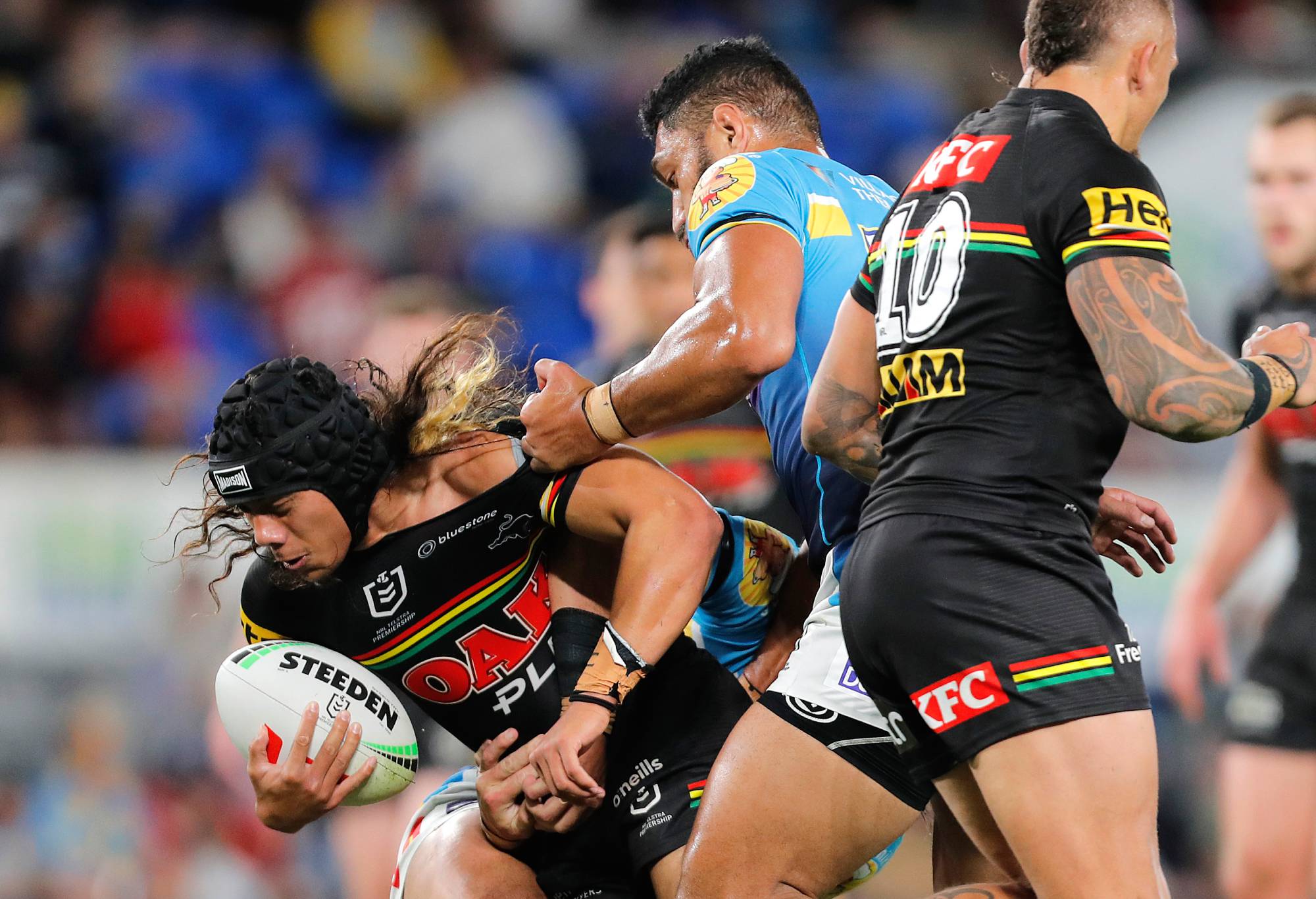The NRL world did a backflip on Saturday morning as news broke that Jarome Luai was set to depart the Penrith Panthers for the Wests Tigers, swapped first for last in the process.
Not long after, however, the stories were walked back a little, with Luai taking to social media to deny the reports and other sources revealing that he had not, in fact, put pen to paper.
Though the player told his teammates that he would depart, it was still unclear if the Tigers would be his destination.
At the heart of the debate was the NRL’s new transfer regulations, which were altered as part of the protracted CBA discussions and came into force on November 1.
They allow players to have a ten day grace period on moving clubs, with the ‘cooling off’ period adapted to assist clubs in retaining talent.
The rules aren’t as complicated as they are sometimes made to sound, but are vital to how the biggest deal of the 2023/24 offseason is set to go down.
When a player gets an offer from a rival club – as Luai has from the Tigers – and they are willing to accept, then their current club gets ten days of exclusivity to make them a better offer to stay.
They don’t have to use this right, and can waive it – which is what happens most of the time, and is why it’s not really that much of a talking point.
Once the offer is submitted to the NRL (for salary cap audit purposes), it is open for 14 days and can be accepted by the player.
Crucially, their current club aren’t told how much the offer is for, and the player or the rival club are under no obligations to disclose the value either.
A third party rival club – say, the Canterbury Bulldogs – don’t know how much the offer is for, either, at least not officially.
At the end of the ten days, the player can either accept or reject the offer, completing the process.
With reference to Luai, this is why the story that the Tigers had signed him was quickly wheeled back, and why the player’s Instagram post denying that he had signed anything was correct.
Luai won’t have signed anything, because he doesn’t have to for ten days, meaning that, in the official sense of it, he hasn’t yet committed to join the Tigers. He couldn’t under the rules.
This setup essentially allows Penrith to save face or cut their losses.
Though the Tigers have to wait ten days, that could be expedited if they submit in writing to the NRL that they are happy for the player to leave. That would be the losses-cutting option, though given that the move isn’t due to take place until 2025, it wouldn’t make much sense to do that.
What would make better PR would be submitting another offer (or at least, intimating that they have) so that the onus is on Luai to reject the Premiers to sign for the wooden spooners. If Penrith’s interest was winning a media war, then that’s what they should do.

Jarome Luai. (Photo by Getty Images/Getty Images)
In reality, that we are now studying the finer points of transfer regulations suggests that the deal is done in all but ink.
This is rugby league, of course, where nothing is done until the player is photographed in their new colours, but then, contracts have never really meant much in this sport to start with.
For ten days, the Tigers will be having kittens. It’s now known that they are all-in on the player, but also that he can still reject them at the end of it. They’ve shown every card they have.
They are in the position that the Gold Coast Titans were in back in March of 2015, when the club released a statement celebrating the arrival of Daly Cherry-Evans, only for the halfback to backflip and stay at Manly.
They’ll know behind the scenes what Luai has said, but until the pen is on the paper, everything is changeable.
When the NRL makes changes to these kind of rules, they often look very complicated and arcane, especially to the average punter who just wants to know what is happening.
The way that most fans learn about these rules is when a high profile transfer takes place and is subject to the new way of doing things – exactly what is happening here.

(Photo by Cameron Spencer/Getty Images)
Back in September, when they were first announced, they were seen as a slightly arcane piece of regulation that didn’t really make a great deal of sense, but suited all parties in negotiations and therefore existed.
Anyone with a cursory memory of rugby league player movements knows that contracts can be made meaningless almost instantly if the star in question wants to go.
The idea that Penrith, for example, don’t know what Luai wants and don’t know what the Tigers are offering him financially is so ludicrous as not to merit mention. Yet, under the rules, that is officially the case.
Now that one of the most high-profile players in the league is subject to these rules, and a series of stories confirming a move have had to be walked back a touch, fans will be able tp put these new rules to the pub test.
Of course, the average punter knows that, in real life, people tend to pick between options, sign contracts and then are forced to stick to them.
But rugby league is not real life. It has its own rules.
Now, they are about to be tested in the court of public opinion in the most high profile way possible – and if Luai doesn’t join the Tigers, people might start to question what the point of the changes were in the first place.






























































































